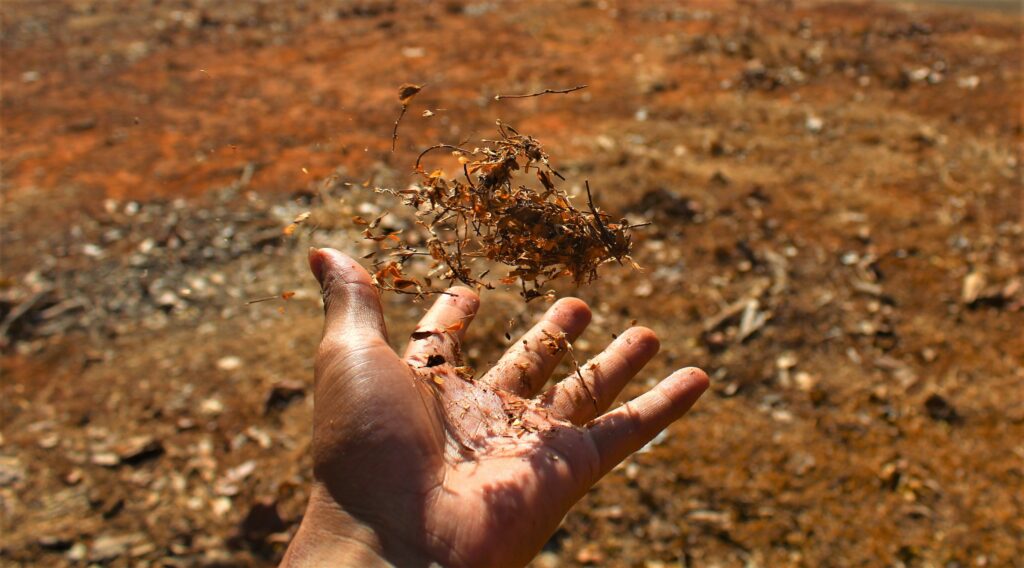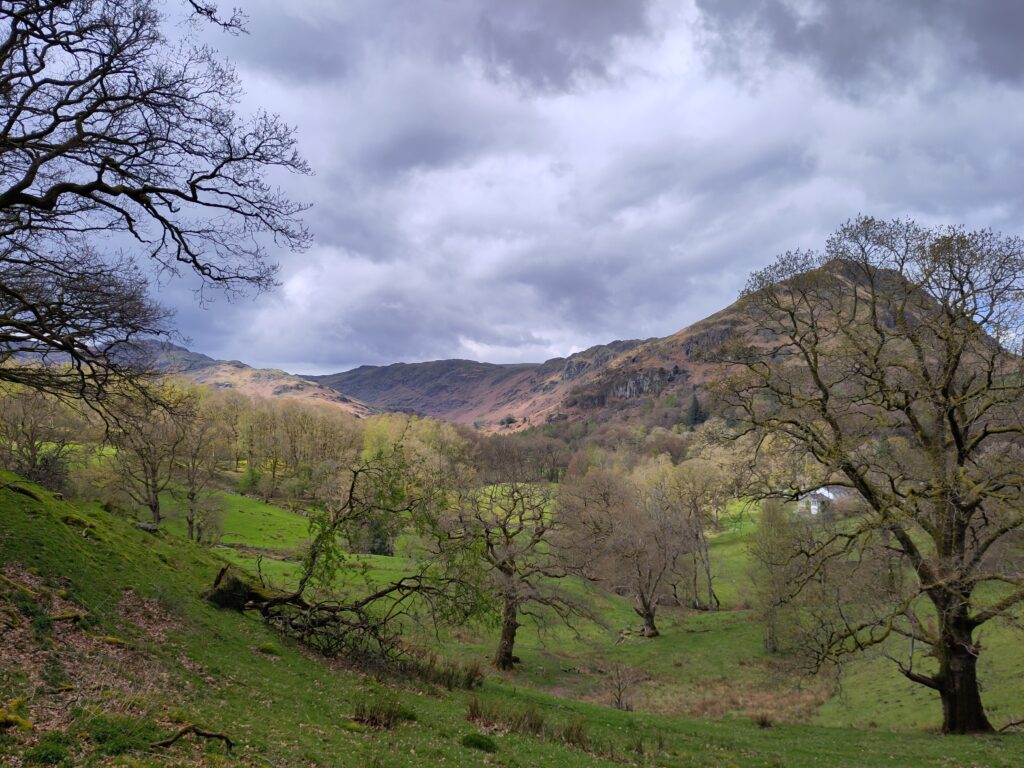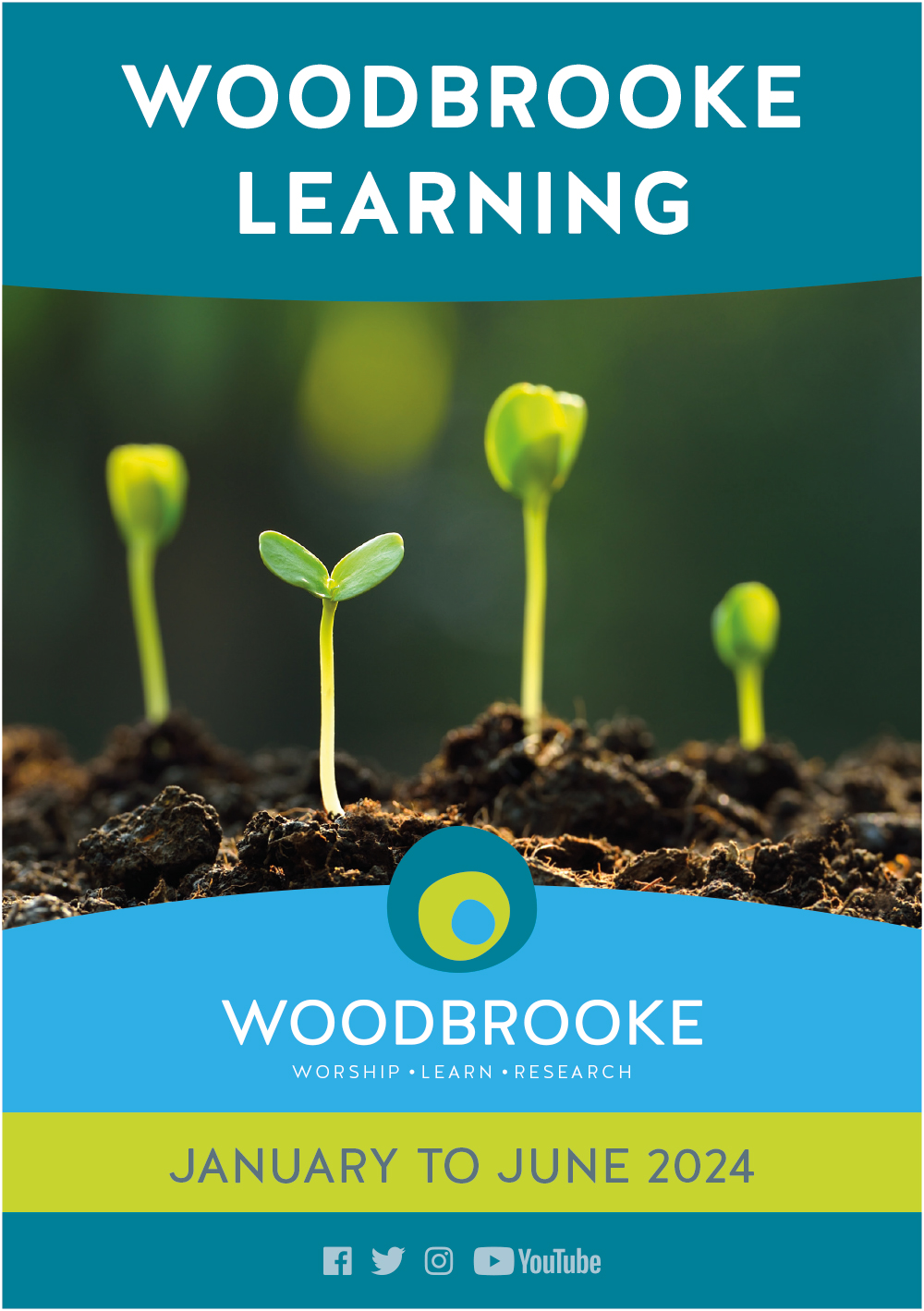Jon Martin discusses why we should talk more about being Quaker and how important it is to be open to change in our Quaker communities.

This is a talk originally given at North West Area Meeting’s Weekend at High Leigh on 23rd April 2022.
We are here today to talk about community. What our community looks like now, how it has been in the past and how it might look in the future.
When I was asked by Gill Sewel and Olivia Sewell-Risley to write for the Friends Quarterly issue on the Future of Quakerism (spring 2021), I was initially hesitant, but then set about thinking about what I would draw upon to answer that question.
I thought about my time at Quaker Life – where over the course of three years I supported work to develop connections between all different forms of Quakerism and those interested in it.
I remembered the conversations I had had with people with all sorts of associations to Quakers, from those who drew their Quaker community from committees, to those passing us at a festival stall – who had lived every day as a Quaker but not been to meeting for decades.
I also thought about how I came to Quakers, at university, not knowing anything about them prior. How I connected to the spiritual path, the people and the worship, but struggled to fit into the prevailing shape of Quaker community once leaving university.
It is a story that is not uncommon at all. I would say from my work supporting the Engaging Young Adult Quakers Project that it is the case for majority of young Friends, but I also know it extends far beyond younger Quakers.
I don’t describe myself as a theologian or academic, though, when I came to write the piece for Friends Quarterly, I did find myself also revisiting my research on social movements – how politics, ideas and identity affect change, sometimes in surprising ways.
___
On the 11 September 1973 Chilean President Salvador Allende was killed during the CIA backed Coup lead by General Pinochet. Allende died refusing to concede but, refusing to throw Chile into civil war, he called upon the people to continue the fight and not to give in. An excerpt from his last speech as the presidential palace was bombed translates to:
“The people must defend themselves, but they must not sacrifice themselves. The people must not let themselves be destroyed or riddled with bullets.
“I have faith in Chile and its destiny. Other men will overcome this dark and bitter moment when treason seeks to prevail. Go forward knowing that, sooner rather than later, the great avenues will open again and free men will walk through them to construct a better society.”
Though the suffering under Pinochet was great, Allende’s speech proved to be prophetic. By the 1990s and 2000s the tables had turned, Pinochet was the pariah and the people demanded change on the streets.
Commentators on Chile at the time of my study talked of the Ghost of Allende walking alongside the student protestors.
On October 25, 2020, the people of Chile voted to redraft their constitution via Constitutional Convention – of the people – washing away some of the last remanants of Pinochet’s dictatorship.
And in 2021 former student leader Gabriel Boric was elected President. He is the youngest president in Chile’s history and the youngest state leader in the world, as well as the president elected with the highest number of votes in the country’s history.
Who would have thought that in 1973, when Pinochet washed away the dreams of Allende, that they would endure?
It is a practical fairy tale that gives me hope though, like all human history, no doubt flawed and nuanced.
___
I was in a meeting last week with my former Colleagues at Quaker Life. I was there in my current role as Head of Communications at Woodbrooke.
We were discussing what to do with Quaker Week – the annual outreach campaign of Quakers in Britain. Ideas were being batted around; some serious, some fun, realistic and ambitious.
One suggestion was that Quakers could visit Quaker graveyards, as an activity of both outreach but fun community building. A term borrowed from a colleague not there was “Picnicking with the ancestors” which led to discussions of Quaker Ghosts.
I wonder, if the Ghost of Allende walked alongside those calling for justice and equality in Chile, what Quaker Ghosts walk alongside us as Quakers today.
___
I am always cagey around Quaker history. I have no Quaker roots in my family that I know of, I have not even experienced children’s meetings or young Quaker gatherings.
There are few better ways to feel second class in a Quaker community than when reminded by another Friend of how rich and important their Quaker ancestry is.
It is perhaps no surprise really that I connect more with the early Friends – time where everyone came in as an enquirer, a seeker.
In the early days of Quakers it was the message that was important.
We use convincement now to describe the formal process of membership but convincement to early Friends was a moment, an experience of being convinced of the truth; being opened up to the teachings of the Christ within.
The formal processes came later.
Membership for the most part was about keeping track of a community that was deeply persecuted – which families to support financially while members of that family were in jail.
Quakers moved from place to place, first worshiping outdoors, in public and later hidden away in houses.
Those who were convinced by the Quaker way lived it.
Many of us know about the valiant sixty; the group of early Friends that travelled all over preaching the message, convincing others to join them.
We are gathered here today at High Leigh after a great period of turbulence for Quaker communities. The pandemic has had a profound impact upon Quakers but this disruption is nothing new.
In 2017 I was involved in planning Quaker Week for Britain Yearly Meeting. Brexit was breaking upon British society and Trump had just been elected.
Even then it felt like the world was in a state of chaos. We came up with the idea of, “In turbulent times be a Quaker”
The initial idea was to state that we had something powerful to offer people in times of difficulty, that there was strength and solace to be found in Quaker community.
“In turbulent times be a Quaker,” is a call to action, an invitation – but it is also in some ways a statement of fact.
Quakers came out of turbulent times – during the civil war and huge unrest. And even in more modern times our numbers have grown during times of unrest and war. WW1. WW2. The Falklands. To some extent the Gulf War.
We have something to offer; something in that early message; that way of responding to the inward light. To answer the call to make the world a better place from the sanctity of meeting for worship resonates with people.
I suspect by the time Quaker Week 2017 had been through the various sign off and development, that message was lost a little.
But one thing I am glad we retained was the message.
In turbulent times, be a Quaker.
It is something I hold onto.
Be a QUAKER
Not attend a meeting
Not become a member
BE a QUAKER
As we wrestle with different forms of worship.
Changing structures such as Area Meetings.
Asking ourselves what it means to be a Quaker holds value.
Or perhaps better than simply be a Quaker – we could say be Quaker.
Asking others to be Quaker is a more open and inviting prospect – a more radical calling than questions of time and place of worship and signing on the metaphorical dotted line of membership.
___
To be Quaker holds open a world of possibility that includes the broad range of people our ideas touch.
It allows for those raised in the Quaker tradition, who hold onto some idea of being Quaker but who are distanced from our structures.
It allows for those worshiping within our meeting houses daily, monthly, yearly…
Those in Quaker schools or with chaplains in prisons.
What is it to be Quaker online? In Zoom worship? In daily life?
To be just a little bit Quaker to accommodate a Quaker family member when not practising yourself.
To be Quaker at a Quaker workplace?
On a demo?
At the end of my Friends Quarterly piece – that got me this gig – I said:
That we don’t allow for a nuanced understanding of engagement with our community.
That we membership, then nothing else.
Only we have filled that nothing else with the idea of an ‘attender’, a term that holds us back, creates a two-tiered system.
How often is an attender to attend?
Where is a valid attendance?
It’s a system that is not fit for purpose.
In this week’s copy of the Friend, 22nd April, there was a letter from a Bill Martin (no relation!). I want to quote from it:
“I have no experience of the ‘old way’. I just know online Meetings, and courses, and I am more than happy with the way things are now. I am absolutely committed to Quakerism and have a long-term calling to help.
“I sincerely wish to become involved and be part of the spiritual journey.
“How do I become a member if I am only able to attend online worships?
“Which path should I follow and specifically, who should I address my application letter to?”
Friends what is our answer to Bill?
New Quaker communities have sprung up in all shapes and sizes – we are seeing growing vibrant Quaker communities outside our structures.
Do we say enough is enough – get yourself down to your local meeting or be gone?
Do we twist our structures to accommodate these changes – a virtual Area Meeting?
Or do we take the chance to start from a blank sheet to really address the question of what it means to be Quaker.
___
You have gathered here this weekend at High Leigh as an Area Meeting.
A valid question might be, what relevance is this to you? All these questions of structure and identity are issues to be wrestled with elsewhere.
I would say as an Area Meeting with the current structure, you have a calling to respond with the levers at your disposal that don’t exist for other Quaker communities – such as Meeting for Sufferings and Yearly Meeting itself.
But I would argue that there is a message in all this that is vital for an Area Meeting gathering like this to hear.
The world is changing. It is the same forces that offer us new patterns of community that stretch our existing structures.
If, as Local and Area Meetings, we don’t allow ourselves to bend with the winds of change – we will break.
Belonging, commitment, identity, are all evolving. What it means to be part of a community, to commit to it, to belong it, to identify with it, looks very different now.
We are shifting to a networked society, a liquid church, all terms I touch upon in my article.
I don’t think it’s useful for me to drop down the rabbit hole of academic literature in this area but there does seem to be a prevailing idea that religious practices are becoming a network of interactions rather than formal communities, as traditional relationships, structure and patterns of belief are malleable, global and interconnected.
I think this puts us here in an interesting place.
___
When I was asked to speak today I was told this was an important event to build community of itself – that as much as it was about thinking on community it was also about doing it.
“Strengthening the AM”. Is it perhaps slightly provocative for me to stand here and gleefully proclaim the collapse of the “old” structures such as Area Meetings?
So… it’s a good job that’s not what I intend to do.
I think there is value to this gathering, and to an Area Meeting if it understands its purpose.
And in this sense I can offer some optimism.
___
Quaker-time. This phrase is used by Dandelion (in ‘A Sociological Analysis of the Theology of Quakers: the silent revolution’ 1996) to describe the time which participants spend together on Quaker activity.
What counts as Quaker Time?
Today might be considered a big chunk of Quaker Time!
When my colleague Simon was researching adolescent Quaker groups, he coined the Community of Intimacy:
This is a collective grouping which places emphasis on belonging to the group, inter-personal networks secured by friendships, shared values, the expression of group identity in some form and the separateness of the group from others (in the case of adolescent Quakers this is both from adult Quakers and other young people).
One of the important feature of these groups, when Simon researched them, is that they spend a lot “Quaker Time” together.
While Young Friends General Meeting might spend long periods apart at their weekend gatherings they experience more “Quaker Time” than many Quaker local meetings might spend.
How much time do Friends in your meetings spend together beyond worship and small talk around coffee?
Simply by spending Quaker Time here together today we will find connection.
When I asked Simon on the trip up here how some of these concepts might tie into the changing nature of community today, he said that:
There could be other ‘communities of intimacy’ within Quakerism:
- that group members feel a sense of belonging and affiliation to the group and a separateness from other similar groups within society;
- the group has some shared values, which can be contrasted with the values of
other, similar groups;
- the group and its members in some way outwardly express their identity
I would certainly agree. I wonder if there are any groups within this Area Meeting that match this brief?
We can view the new landscape we find ourselves in as a threat or an opportunity.
When thinking about Quaker Time, has the pandemic actually opened our eyes to new ways of spending time in community that is distinctly Quaker?
Could a Quaker WhatsApp group, Facebook group, Discord server, Twitter hashtag, Instagram account, count in some way as Quaker Time?
If we can connect with each other across the world, drop into a Zoom room with Quakers anytime anywhere… is this not a way to strengthen ourselves?
___
So here’s another question: what if the purpose of an Area Meeting. This Area Meeting. was not to hold fast to a structure and a way of doing things, but to always ask, “what is the best way to support people to be Quaker?”
How can we create opportunities for all different types of “Quaker Time”?
How can we explore what different ways people are living out their ministry and truth – see difference as a strength? Start to really live and breathe a fluid structure that embraces different patterns of belonging to Quaker community – seeing them as equals?
___
Ultimately, when we look towards the future of Quaker Community, there isn’t a clear picture of what that is going to look like.
We live in a very turbulent landscape. It felt like that in 2017. Now, five years later, it’s far more turbulent than we could have imaged. We’re still in the midst of a pandemic the likes of which we haven’t seen in nearly a century. We are seeing wars wage – within nations and among nations. Unprecedented inequality. Deception and a-morality is rife in public life. And an unfolding climate catastrophe.
A colleague remarked to me this week that perhaps we could do better at tying together the work on our structures and our action in the world. For example, as we take our time thinking how we might look in 10 years as an institution, are we factoring in climate breakdown?
Who is on the premises committee takes on a different vibe when the meeting house is flooded…
Where is the balance between strengthening Quaker communities and apocalypse-proofing Quakerism?
It sounds dramatic but as the pandemic unfolded it certainly felt that way.
___
I’m cautiously optimistic though.
We can seem a sleepy community, but I think our message and practice has value in this world – if it doesn’t it will fade away – but I see the opposite.
The fire of the early friends, lit in them by the ghosts of the early Christians, passes down to us now and is brighter in the darkness.
Those Quaker communities that understand their purpose are confident in what they have to offer each other, and have found themselves strengthened by the last 2 years, not weakened.
My own meeting grew during the pandemic as it called back those who had left it – friends who had to travel the world (those out there being Quaker) returning to the virtual fireside of our small meeting to grant them strength to face the challenges before them.
“Quakerism is doing fine,” a Friend remarks to me, not for the first time. She is part of our meeting but worships in her home and emails in her reflections – rather than joining Zoom. She keeps tabs on us via Facebook. Sees us in passing when she can.
“It’s doing fine,” she would say, “all this doom and gloom, old men fretting about lists of names and number of people on seats. The ideas are out there! Having their way… Anyway, round the world there’s plenty of Quakers. If it’s useful, does its thing.”
It is a frustrating view if your aim is to find someone to serve on a committee – many have tried with this friend, it’s never happening – but it’s a reassuring philosophy. Grounded in spirit if not in the practical day to day.
___
I hope today you come away with a bit of confidence in your sense of being Quaker. That you benefit from being Quaker for a while with others – Quaker Time – whatever that looks like to you. And that you can then take it out with you into the world.
And take an open mind back into your Quaker communities – whatever they look like.
__
This is a talk was part of a bespoke Woodbrooke Where You Are on the subject of Being Quaker Community, as part of North West Area Meeting’s Weekend at High Lea on 23rd April 2022. The event also included facilitated activities throughout the day led by Woodbrooke and an animation workshop led by Lauren Veevers – freelance animator and creative facilitator recruited by the Area Meeting.
The animation about Quaker community, created by the Children, Young People and Adults of the Area Meeting, is available to watch below and North West London Area Meeting are happy for it to be shared widely. If you would like Woodbrooke to come to your Quaker community visit our Woodbrooke Where You Are page to find out what we can do for you.



